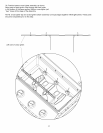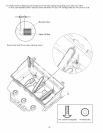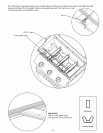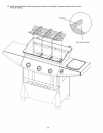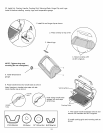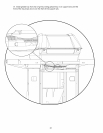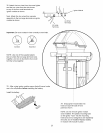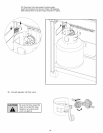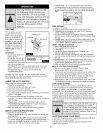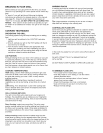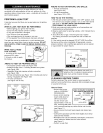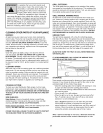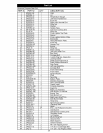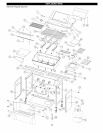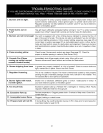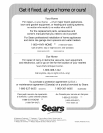Special offers from our partners!

Find Replacement BBQ Parts for 20,308 Models. Repair your BBQ today.
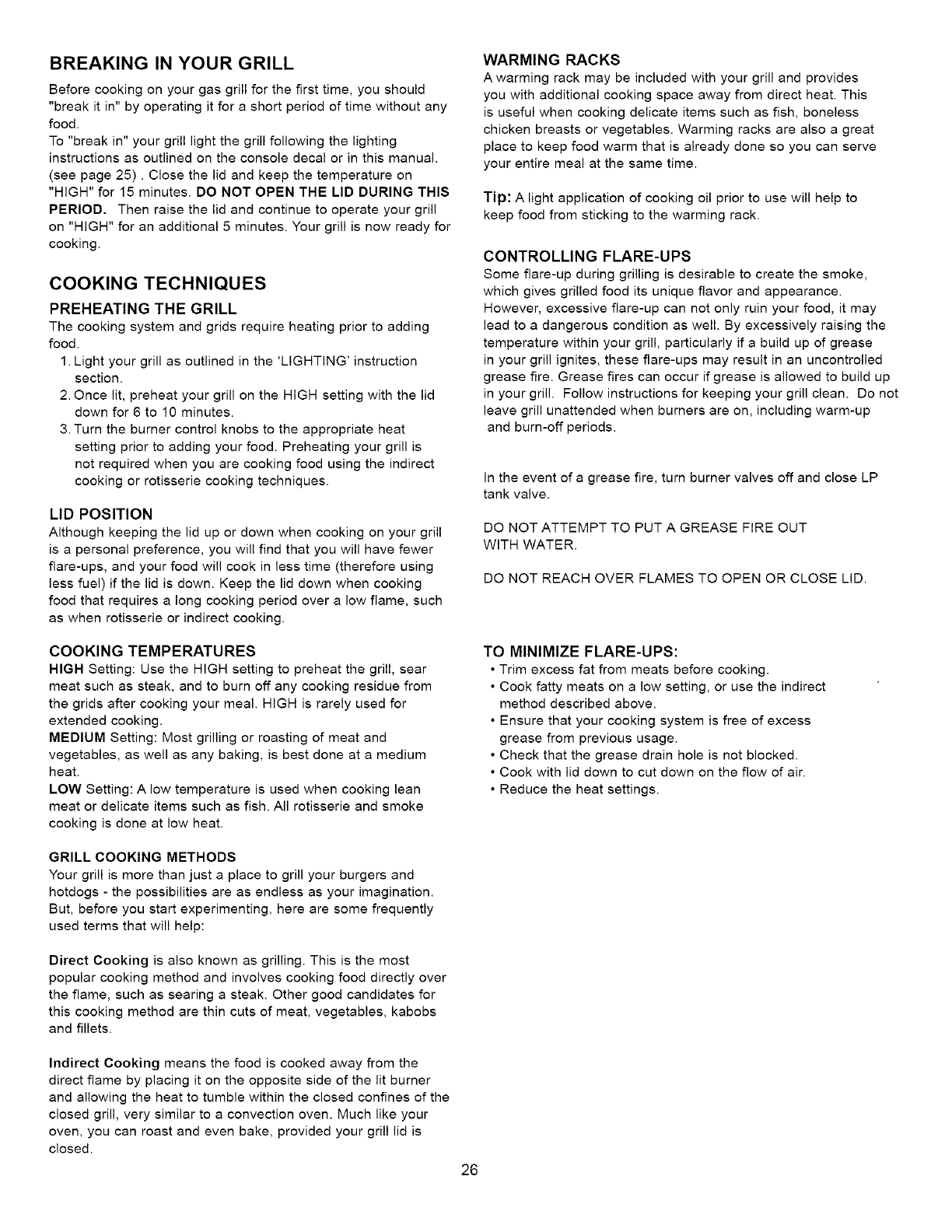
BREAKING IN YOUR GRILL
Before cooking on your gas grill for the first time, you should
"break it in" by operating it for a short period of time without any
food.
To "break in" your grill light the grill following the lighting
instructions as outlined on the console decal or in this manual.
(see page 25). Close the lid and keep the temperature on
"HIGH" for 15 minutes. DO NOT OPEN THE LID DURING THIS
PERIOD. Then raise the lid and continue to operate your grill
on "HIGH" for an additional 5 minutes. Your grill is now ready for
cooking.
COOKING TECHNIQUES
PREHEATING THE GRILL
The cooking system and grids require heating prior to adding
food.
1. Light your grill as outlined in the 'LIGHTING' instruction
section.
2. Once lit, preheat your grill on the HIGH setting with the lid
down for 6 to 10 minutes.
3. Turn the burner control knobs to the appropriate heat
setting prior to adding your food. Preheating your grill is
not required when you are cooking food using the indirect
cooking or rotisserie cooking techniques.
LID POSITION
Although keeping the lid up or down when cooking on your grill
is a personal preference, you will find that you will have fewer
flare-ups, and your food will cook in less time (therefore using
less fuel) if the lid is down. Keep the lid down when cooking
food that requires a long cooking period over a low flame, such
as when rotisserie or indirect cooking.
COOKING TEMPERATURES
HIGH Setting: Use the HIGH setting to preheat the grill, sear
meat such as steak, and to burn off any cooking residue from
the grids after cooking your meal. HIGH is rarely used for
extended cooking.
MEDIUM Setting: Most grilling or roasting of meat and
vegetables, as well as any baking, is best done at a medium
heat.
LOW Setting: A low temperature is used when cooking lean
meat or delicate items such as fish. All rotisserie and smoke
cooking is done at low heat.
WARMING RACKS
A warming rack may be included with your grill and provides
you with additional cooking space away from direct heat. This
is useful when cooking delicate items such as fish, boneless
chicken breasts or vegetables. Warming racks are also a great
place to keep food warm that is already done so you can serve
your entire meal at the same time.
Tip: A light application of cooking oil prior to use will help to
keep food from sticking to the warming rack.
CONTROLLING FLARE-UPS
Some flare-up during grilling is desirable to create the smoke,
which gives grilled food its unique flavor and appearance.
However, excessive flare-up can not only ruin your food, it may
lead to a dangerous condition as well. By excessively raising the
temperature within your grill, particularly if a build up of grease
in your grill ignites, these flare-ups may result in an uncontrolled
grease fire. Grease fires can occur if grease is allowed to build up
in your grill. Follow instructions for keeping your grill clean. Do not
leave grill unattended when burners are on, including warm-up
and burn-off periods.
In the event of a grease fire, turn burner valves off and close LP
tank valve.
DO NOT ATTEMPT TO PUT A GREASE FIRE OUT
WITH WATER.
DO NOT REACH OVER FLAMES TO OPEN OR CLOSE LID.
TO MINIMIZE FLARE-UPS:
• Trim excess fat from meats before cooking.
• Cook fatty meats on a low setting, or use the indirect
method described above.
• Ensure that your cooking system is free of excess
grease from previous usage.
• Check that the grease drain hole is not blocked.
• Cook with lid down to cut down on the flow of air.
• Reduce the heat settings.
GRILL COOKING METHODS
Your grill is more than just a place to grill your burgers and
hotdogs - the possibilities are as endless as your imagination.
But, before you start experimenting, here are some frequently
used terms that will help:
Direct Cooking is also known as grilling. This is the most
popular cooking method and involves cooking food directly over
the flame, such as searing a steak. Other good candidates for
this cooking method are thin cuts of meat, vegetables, kabobs
and fillets.
Indirect Cooking means the food is cooked away from the
direct flame by placing it on the opposite side of the lit burner
and allowing the heat to tumble within the closed confines of the
closed grill, very similar to a convection oven. Much like your
oven, you can roast and even bake, provided your grill lid is
closed.
26



